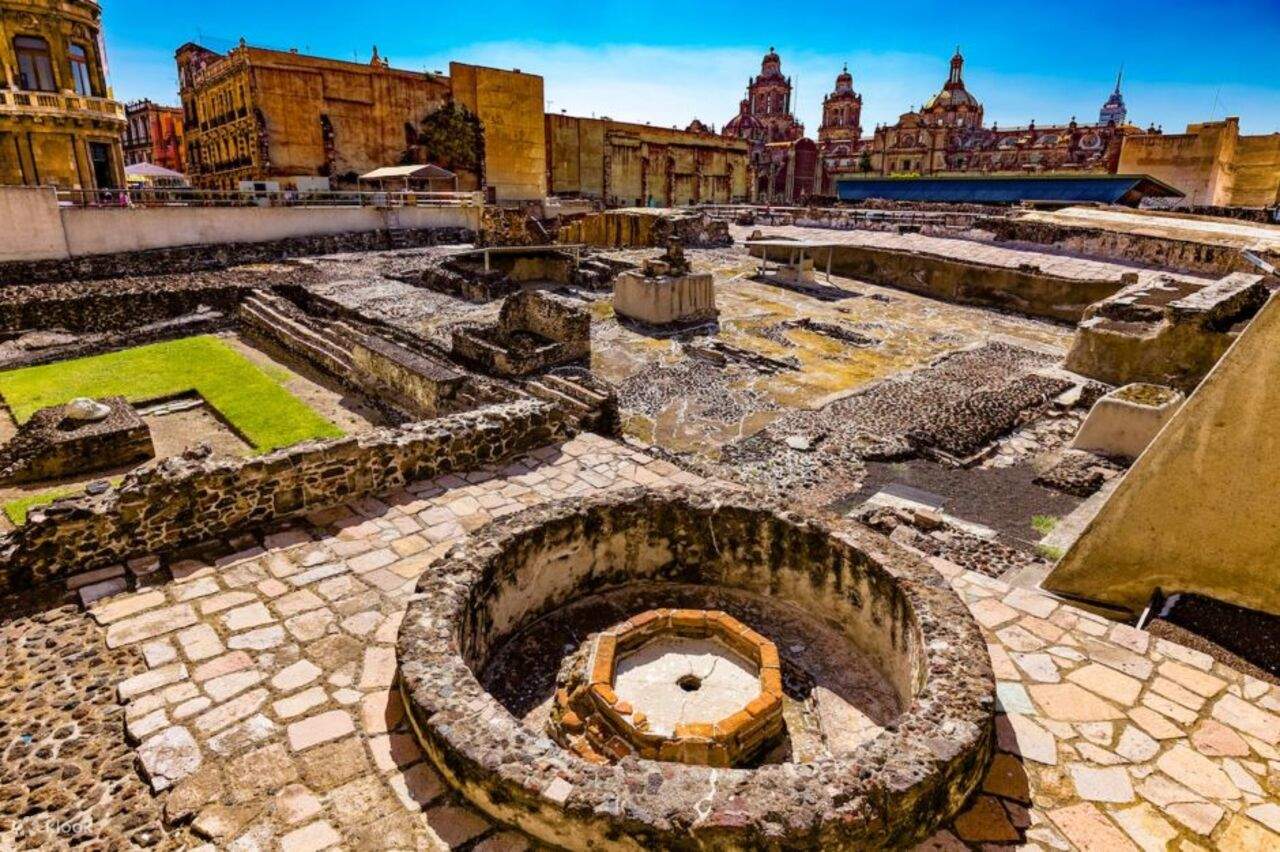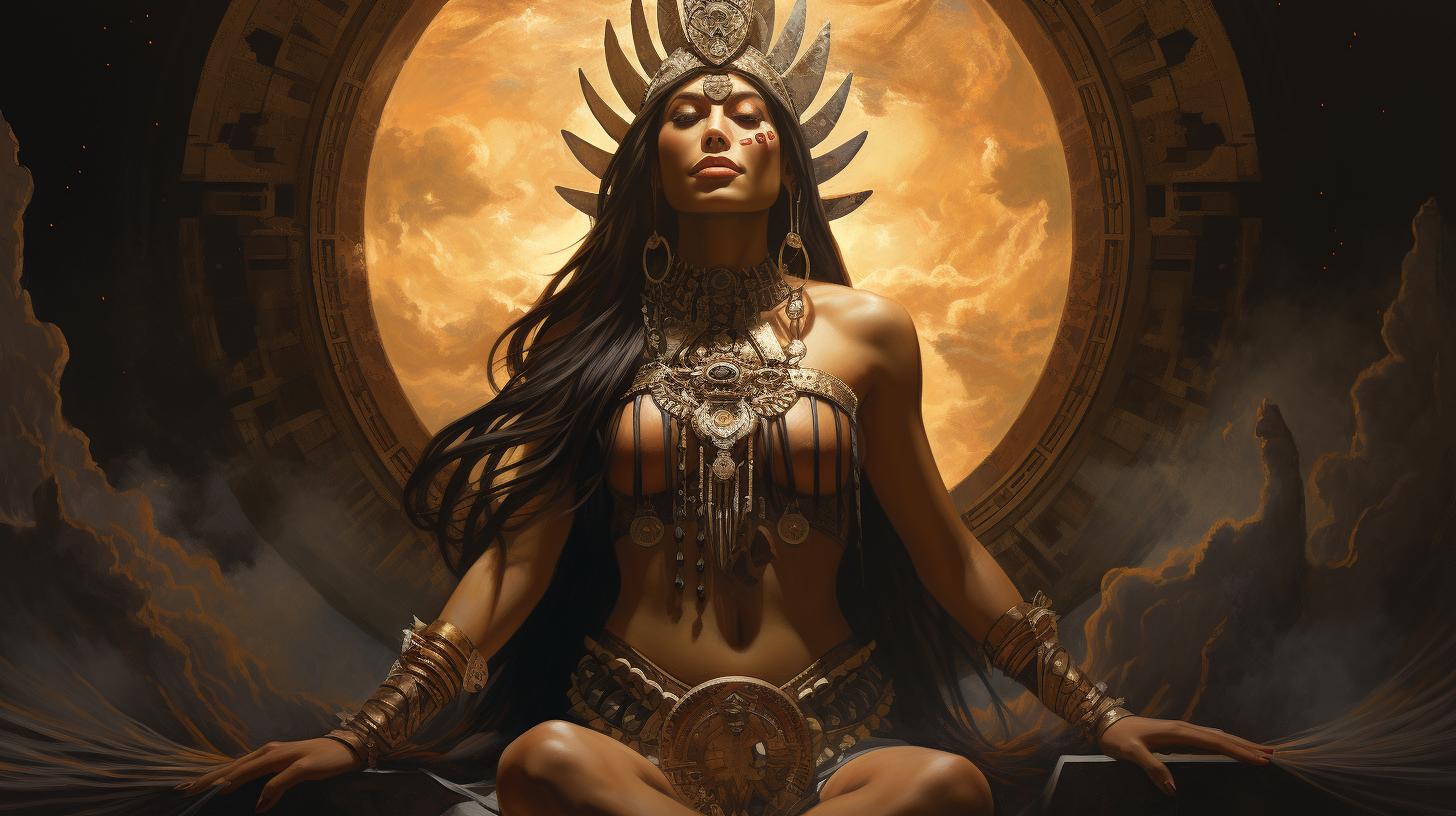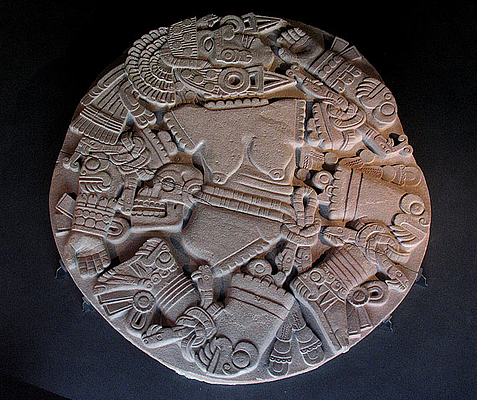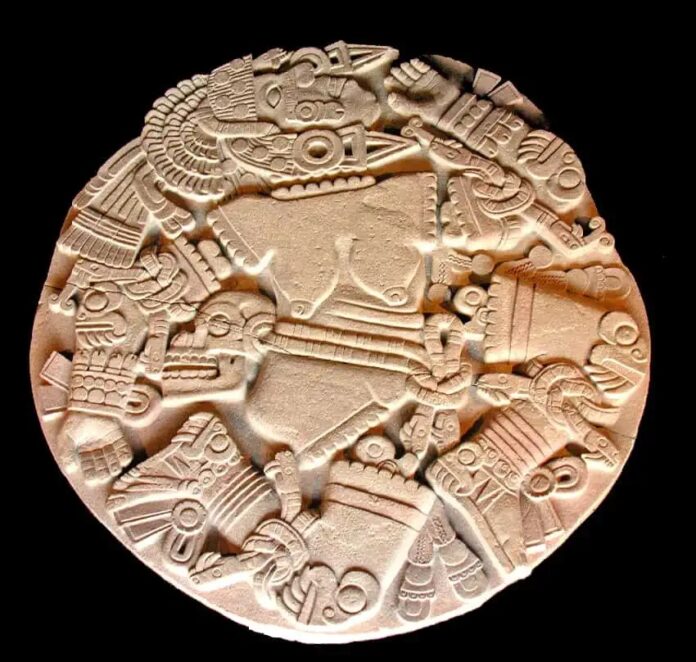A significant milestone in Mexican archaeology is being celebrated with a new exhibit hosted by the Museum of Templo Mayor in Mexico City. This exhibit marks the 45th anniversary of the discovery of a monolith depicting Coyolxauhqui, the Mexica lunar goddess. This finding was crucial in shedding light on the Mexica civilization before the Spanish conquest and continues to fascinate scholars and the public alike.
The Discovery of Coyolxauhqui

In 1978, an electrical worker near Mexico City’s cathedral made a groundbreaking discovery when his shovel struck a buried artifact. This artifact turned out to be a monolith portraying Coyolxauhqui, the dismembered lunar goddess who lost a battle against her brother, the Sun. This discovery was monumental as it signaled the potential location of Templo Mayor, a site long lost to history.
Exhibit Details: “Coyolxauhqui: The Star, The Goddess, The Discovery”
The exhibit, titled “Coyolxauhqui: The Star, The Goddess, The Discovery,” features over 150 archaeological objects centered around the mythology, symbolism, and scientific research related to Coyolxauhqui. The exhibit, which runs through June 4, aims to provide an in-depth look at the goddess and her significance within Mexica culture.
Historical Context of Templo Mayor

For nearly 500 years, the exact location of Templo Mayor remained a mystery. The religious complex was destroyed around 1521 on the orders of Spanish conqueror Hernán Cortés, who aimed to dismantle every building in Tenochtitlan, the capital of the Mexica empire. Efforts to rediscover and preserve the traces of Mexica civilization began in earnest in 1821 but faced numerous challenges due to the dense population of the capital.
Patricia Ledesma and the Rescue Mission
Patricia Ledesma, archaeologist and director of the Museum of Templo Mayor, highlighted the arduous journey of her predecessors who embarked on the mission to rescue Mexica civilization traces after the colonial era. Progress was slow, but the discovery of Coyolxauhqui provided a crucial breakthrough.
The Myth of Coyolxauhqui and Huitzilopochtli

The myth surrounding Coyolxauhqui is a captivating tale. Coatlicue, the mother of the gods, becomes pregnant after holding a ball of feathers. Her daughter Coyolxauhqui, enraged by this, plots with her 400 brothers to kill their mother. However, as they attempt the assassination, Coatlicue gives birth to Huitzilopochtli, the solar and war deity, who defeats Coyolxauhqui and casts her dismembered body to the base of the hill. This myth symbolizes the triumph of light over darkness and the eternal struggle between the sun and the moon.
Archaeological Significance and Preservation
Coyolxauhqui’s location was pivotal. The circular stone where she was carved in 1469 was found near a flight of stairs, indicating her position at the base of Templo Mayor, dedicated to Huitzilopochtli. This discovery ignited national and international interest, leading to an ongoing archaeological project by the National Institute of Anthropology and History.
Public Engagement and Continued Excavation

Since the discovery, Coyolxauhqui has captivated the hearts of Mexicans. The excavation project at Templo Mayor, led by chief archaeologist Eduardo Matos, opened to the public once a week, drawing crowds eager to connect with their ancestral heritage. To date, archaeologists have discovered five Coyolxauhqui sculptures, with the best-preserved one being the initial find by the electrical worker 45 years ago.
Conclusion
The discovery of Coyolxauhqui remains a cornerstone in understanding Mexica civilization and its rich mythology. The ongoing exhibit at the Museum of Templo Mayor not only commemorates this significant find but also offers a deeper appreciation of the cultural and historical heritage of Mexico. As the exhibit continues to draw interest, it reaffirms the enduring legacy of Coyolxauhqui and the Mexica civilization.
